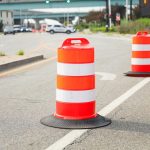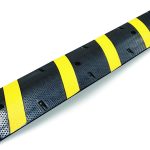Overview
Introduction to plastic speed bumps
Plastic speed bumps have become a popular solution for enhancing road safety and protecting pedestrians. These speed bumps are made from durable plastic materials that are designed to withstand heavy traffic and harsh weather conditions. Unlike traditional speed bumps, which are often made from concrete or asphalt, plastic speed bumps offer several advantages. They are lightweight, easy to install, and can be easily removed if necessary. Additionally, plastic speed bumps are highly visible due to their bright colors, making them more effective at alerting drivers to slow down. Overall, plastic speed bumps are a cost-effective and efficient way to improve road safety and create safer environments for pedestrians.
Importance of road safety
Road safety is of utmost importance in our society. With the increasing number of vehicles on the road, it is crucial to implement measures that enhance safety for both drivers and pedestrians. Plastic speed bumps are an innovative solution that has proven to be effective in reducing accidents and protecting pedestrians. These speed bumps are designed to slow down vehicles, ensuring that drivers adhere to the speed limit and remain cautious while driving. By installing plastic speed bumps, we can create a safer environment for everyone on the road, minimizing the risk of accidents and promoting responsible driving.
Need for pedestrian protection
With the increasing number of vehicles on the road, it has become crucial to prioritize pedestrian safety. Traditional speed bumps made of concrete or asphalt can be harsh on vehicles and cause discomfort to drivers. However, plastic speed bumps offer a more efficient and pedestrian-friendly solution. They are designed to slow down vehicles without causing damage to the cars or discomfort to the drivers. Plastic speed bumps enhance road safety by encouraging drivers to reduce their speed, protecting pedestrians from accidents, and creating a safer environment for everyone.
Benefits of Plastic Speed Bumps
Reduced vehicle speed
Plastic speed bumps are an effective solution for reducing vehicle speed and enhancing road safety. By strategically placing these bumps on roads, drivers are forced to slow down, preventing accidents and protecting pedestrians. The use of plastic speed bumps is particularly beneficial in areas with high pedestrian traffic, such as school zones and residential neighborhoods. These bumps provide a visual and physical reminder for drivers to adhere to speed limits, promoting a safer environment for everyone on the road.
Improved driver awareness
Plastic speed bumps have proven to be an effective tool in enhancing driver awareness on the road. These innovative road safety measures are designed to slow down vehicles and grab the attention of drivers, ensuring they are more cautious and alert while driving. By creating a noticeable change in the road surface, plastic speed bumps serve as a visual reminder for drivers to reduce their speed and pay attention to their surroundings. This increased driver awareness not only helps prevent accidents but also protects pedestrians by making drivers more conscious of their presence. With their bright colors and reflective properties, plastic speed bumps are a highly visible and efficient solution to promote road safety and protect pedestrians.
Enhanced pedestrian safety
Plastic speed bumps play a crucial role in enhancing pedestrian safety on the roads. These innovative road safety measures are designed to slow down vehicles and create a safe environment for pedestrians to cross the road. By installing plastic speed bumps, the risk of accidents and collisions involving pedestrians is significantly reduced. These speed bumps are highly visible and effectively alert drivers to slow down and be cautious while approaching pedestrian crossings. Moreover, the use of plastic speed bumps is beneficial as they are durable, cost-effective, and environmentally friendly. Overall, the implementation of plastic speed bumps greatly enhances road safety and protects pedestrians from potential hazards.
Types of Plastic Speed Bumps
Traditional speed bumps
Traditional speed bumps have been used for many years to slow down vehicles and improve road safety. These speed bumps are usually made of concrete or asphalt and are raised sections of the road surface. However, they have some drawbacks. Traditional speed bumps can cause discomfort and inconvenience for drivers, as they often result in a jarring and uncomfortable ride. Additionally, they can potentially damage vehicles if drivers do not slow down enough. In contrast, plastic speed bumps offer a more efficient and effective solution to enhance road safety and protect pedestrians.
Speed humps
Speed humps, also known as speed bumps, are a common traffic calming measure used on roads to slow down vehicles and enhance road safety. These raised devices are typically made of plastic and are strategically placed in areas where speeding is a concern, such as residential neighborhoods, school zones, and parking lots. The purpose of speed humps is to force drivers to reduce their speed, making it safer for pedestrians to cross the road and reducing the risk of accidents. Unlike traditional speed bumps, plastic speed humps are designed to be more gentle on vehicles, minimizing the impact on car suspensions and reducing noise pollution. Additionally, plastic speed humps are durable, weather-resistant, and easy to install, making them a cost-effective solution for improving road safety and protecting pedestrians.
Speed cushions
Speed cushions are a type of traffic calming device that are designed to slow down vehicles and improve road safety. Unlike traditional speed bumps, which are raised across the entire width of the road, speed cushions are wider and have cut-outs in the middle to allow larger vehicles, such as buses and emergency vehicles, to pass through without slowing down. This makes them an effective solution for controlling speed in areas with high pedestrian traffic, as they help to protect pedestrians while still allowing for the smooth flow of traffic. By implementing plastic speed cushions, cities can enhance road safety and create a more pedestrian-friendly environment.
Installation and Maintenance
Proper installation guidelines
Proper installation of plastic speed bumps is crucial for ensuring road safety and protecting pedestrians. Firstly, it is important to select a suitable location for the speed bumps, considering factors such as traffic flow and visibility. The speed bumps should be placed at a distance that allows vehicles to slow down comfortably without causing abrupt braking. Additionally, the surface where the speed bumps will be installed should be clean and free from any debris or obstructions. It is recommended to use proper tools and equipment for installation to ensure a secure and stable placement. Lastly, proper signage and markings should be placed to alert drivers of the presence of speed bumps and to ensure maximum visibility, especially during nighttime. By following these installation guidelines, plastic speed bumps can effectively enhance road safety and protect pedestrians.
Regular maintenance procedures
Regular maintenance procedures are essential for ensuring the effectiveness and longevity of plastic speed bumps. These procedures typically involve inspecting the speed bumps for any signs of damage or wear, such as cracks or fading. If any issues are identified, prompt repairs or replacements should be carried out to maintain the safety and functionality of the speed bumps. Additionally, regular cleaning of the speed bumps is necessary to remove dirt, debris, and other substances that may accumulate over time. By following these maintenance procedures, road authorities can ensure that plastic speed bumps continue to enhance road safety and protect pedestrians.
Longevity of plastic speed bumps
Plastic speed bumps are known for their exceptional longevity, making them a popular choice for enhancing road safety and protecting pedestrians. Unlike traditional speed bumps made of concrete or asphalt, plastic speed bumps are made from durable and weather-resistant materials that can withstand heavy traffic and harsh environmental conditions. This longevity ensures that the speed bumps remain effective in slowing down vehicles and alerting drivers to pedestrian crossings for an extended period of time. Additionally, the plastic construction of these speed bumps allows for easy installation and maintenance, further contributing to their longevity and cost-effectiveness. Overall, the longevity of plastic speed bumps makes them a reliable and sustainable solution for improving road safety.
Case Studies
Successful implementation in city X
City X has successfully implemented plastic speed bumps as a measure to enhance road safety and protect pedestrians. These innovative speed bumps have proven to be highly effective in reducing vehicle speed and ensuring better compliance with traffic regulations. The use of plastic speed bumps has also resulted in a significant decrease in accidents and injuries, making the city’s streets much safer for both motorists and pedestrians. The success of this implementation in city X serves as a model for other cities looking to improve road safety and prioritize pedestrian protection.
Impact on accident rates
The introduction of plastic speed bumps has had a significant impact on accident rates. These innovative road safety measures have proven to be highly effective in reducing the number of accidents and protecting pedestrians. By slowing down vehicles and forcing drivers to be more cautious, plastic speed bumps help prevent speeding and reckless driving. This, in turn, reduces the likelihood of collisions and injuries on the road. Studies have shown that areas where plastic speed bumps are installed have experienced a noticeable decrease in accident rates, making them an essential tool in promoting road safety.
Positive feedback from residents
Residents have provided positive feedback regarding the use of plastic speed bumps to enhance road safety and protect pedestrians. They have observed a decrease in speeding vehicles and an increase in cautious driving behavior. The plastic speed bumps have effectively slowed down traffic and created a safer environment for pedestrians, especially in residential areas. Residents appreciate the proactive approach taken by the authorities in implementing these innovative solutions to improve road safety.
Conclusion
Summary of benefits
Plastic speed bumps have become an effective solution for enhancing road safety and protecting pedestrians. These innovative speed bumps offer several benefits, including improved visibility, reduced vehicle speed, and increased driver awareness. By using plastic materials, these speed bumps are durable, weather-resistant, and cost-effective. Additionally, they are easy to install and can be customized to fit different road conditions. Overall, the use of plastic speed bumps is a practical and efficient way to create safer roads and ensure the well-being of pedestrians.
Importance of widespread adoption
The widespread adoption of plastic speed bumps is of utmost importance in enhancing road safety and protecting pedestrians. These innovative road safety measures have proven to be highly effective in reducing speeding and minimizing accidents. By installing plastic speed bumps on roads, drivers are forced to slow down, ensuring the safety of pedestrians crossing the road. Moreover, plastic speed bumps are durable and weather-resistant, making them a cost-effective solution for long-term road safety. The widespread adoption of plastic speed bumps will not only save lives but also contribute to creating safer and more pedestrian-friendly communities.
Future developments in plastic speed bump technology
Plastic speed bump technology is constantly evolving to enhance road safety and protect pedestrians. In the future, we can expect to see advancements such as smart speed bumps that can detect and respond to approaching vehicles, adjustable speed bumps that can be customized for different road conditions, and eco-friendly speed bumps made from recycled materials. These developments will not only improve the effectiveness of speed bumps in reducing speed and preventing accidents, but also contribute to sustainability efforts by reducing waste and energy consumption. The future of plastic speed bump technology holds great promise for creating safer and more environmentally-friendly roads.






